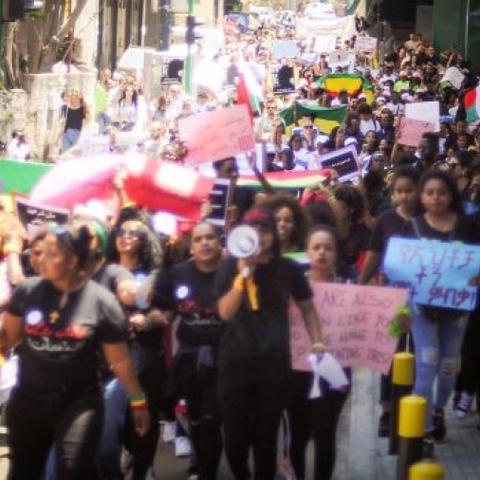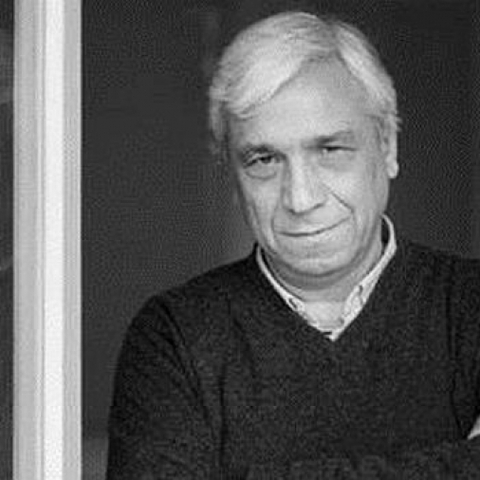We will not forget; Commemorating the 50th Anniversary of the Beginning of the Lebanese Civil War
Beyond the State, Civil Society filling the gap of Dealing with the Past
It was exactly 50 years ago when the Lebanese civil war started on 13 April 1975. The multi-faceted conflict had many political, religious and social root causes and lasted 15 years. The post-war period was marked by a return to relative normalcy, paired with recurring cycles of violence. While most political leadership has been supporting a culture of amnesia, civil society has played an important role in bringing the legacy of the Civil War to the public attention to heal wounds and prevent new conflicts.
![[-0]](/sites/default/files/styles/large/public/2025-04/imago53364666.jpg?itok=9KPJvLwj)
IMAGO / ZUMA/Keystone
On 13th April 1975, Christian militant groups attacked a bus carrying mainly Palestinian passengers through the predominantly Christian neighborhood of Ain El Roummaneh, killing 27 persons. The ‘bus incident’ marked the beginning of the Lebanese civil war. However, the presence of Palestinian armed groups in Lebanon, which sought to fight Israel from Lebanese soil, was only one major factor among many for the bloodshed. The Lebanese National Movement (LNM) backed the Palestinians, but many Christian parties were opposed to it. This deep rift between the two factions brought to the surface deeper root causes of division that already existed in Lebanese society, such as the dominance of Christian political leadership and power and the marginalization of vast parts of Lebanese society affected by poverty. This mix of root causes contributed to fueling the civil war.1 Another major conflict driver was three invasions into Lebanon between 1975 and 1990 by the Israeli army (in 1978 and 1982) as well as the Syrian armed forces (in 1976). An estimated 100,000 people were killed from a total population of 3 million, and almost one million were displaced during the 15-year-long conflict. Lebanon’s capital, Beirut, was vastly destroyed. Thousands of Lebanese were kidnapped by militias. Their remains are unknown until today - an open wound that has not healed.
The Ta’if Agreement was the pact that pacified Lebanon, granting amnesty to anyone who had participated in the civil war and implementing a disarmament process for all militias except for one – Hezbollah. The Iranian and Syrian-backed militant group was fighting the Israeli army in the occupied border strip of South Lebanon in the 1990s, which served as a justification for the armed non-state actor to keep its weapons. 2
The post-civil war years were marked by the reconstruction of Lebanon, on the one hand, but also by persistent cycles of regionally limited internal and bilateral conflicts. For example, in 2008, the Lebanese capital witnessed violent clashes between Hezbollah and Sunni armed groups after the Lebanese government tried to dismantle Hezbollah’s telecommunication system. From 2011 until 2013, Alawite and Sunni militiamen engaged in bloody street fights in Tripoli, Lebanon’s second biggest city, with the risk of spilling over to other areas in Lebanon.
What were the reasons behind the instability prevailing in Lebanon, although the civil war had officially ended in 1990? Putting an end to the 15-year-long conflict was primarily possible because many of the former warlords became political leaders. Although this was envisaged for a transitional period, many are in power until today. Lebanon’s political system is based on sectarianism and a balance of power between the different sectarian groups, which made it possible for the war to end. Still, this system also bore the danger of permanent divisions along religious lines. The political elite wasn’t interested in opening their war files or acknowledging their wrong-doings, but rather in keeping the dirt under the carpet. The general amnesty contributed to pacifying the country and led to a culture of impunity and corruption.
The only official efforts to do something about the legacy of the civil war came from the late Prime Minister Rafik Hariri, a Lebanese politician who had not been part of the conflict. He had established a commission of historians to come up with a new curriculum for history education. However, the outcomes of this commission were locked away because the Lebanese parliament could not agree with these findings. Until today, the history education curriculum stopped in 1943, when Lebanon gained independence from the French Mandate. Hence, the generations born after the war don’t learn anything about this conflict in educational institutions.
The ongoing cycles of violence in Lebanon highlight the consequences of failing to address the legacy of the civil war. By neglecting this critical and still painful issue, the state has left a dangerous void that continues to fuel instability. Among those trying to fill this gap were journalists like Robert Fisk, attempting to capture the essence of war in his book “Pity the Nation.” Jocelyne Saab, as well as many other Lebanese filmmakers, tried to make sense of the civil war through their film productions. Lebanese artists produced installations and artwork to commemorate the horrors of this painful period of recent Lebanese history. 3 The first architect who referred to the civil war in a project was Bernard Khoury: He built a nightclub in the shape of a tomb in Karantina, where a massacre had taken place in 1976, polarizing opinions about the project ranging between genius to deeply cynical. 4
One of the first civil society organizations to take up work tackling an important issue related to the Lebanese civil war was the “Committee for the Families of the Kidnapped and Disappeared in Lebanon”.5 Wadad Halawani founded the NGO in 1998, after her husband had been abducted and disappeared. She has fought for the right to know about the whereabouts of those individuals who were forcibly abducted during the war ever since – without closure until today.
The civil society started to become active to deal with the past in 2008 after the street fights in Beirut, and the conflict in Tripoli. In 2008, representatives of all Lebanese parties had flown to Qatar to meet and resolve the conflict between Hezbollah and Sunni armed groups, which had nearly ignited a new civil war. Lebanese NGOs occupied the Beirut airport with banners saying, “Don’t come back before you agree.”
Also, for my husband and myself, the conflict in 2008 was a wake-up call. My husband, who had been a commander of a militant group during the 15 years of war. Still, after the end of the conflict, he headed the youth department of the Ministry of Displaced People and initiated several reconciliation projects for youth. In 2008, he had seen the son of one of his former comrades on a scooter carrying a gun. He called him out to immediately return home, being shocked to see just one generation after the war had ended engaged in yet another deadly adventure. For me, the 2008 street battles rang alarm bells, too. I decided to explore informal ways of history education through oral history, engaging testimonies, and filmmaking for Lebanese teens in high schools, so that they could learn from the past and hopefully not repeat it, an initiative implemented by a Lebanese peace organization. 6At that time, few other organizations tackled the legacy of the civil war. “UMAM” was among the first foundations to create an archive dedicated to the Lebanese Civil War and is, until now, the most prominent place to turn to when wanting to research this period of time.7 Later, the “Lebanese Association for History” engaged in educating history teachers with a focus on the civil war period.8 In 2012, former ex-combatants came together to respond to the young generations of fighters of the Tripoli conflict by launching an open letter urging the young fighters not to repeat the same mistakes they had once committed during the civil war. Ultimately, this led to the creation of the organization “Fighters for Peace”.9 As the provocative name suggests, the NGO comprises former combatants working together towards a peaceful coexistence in Lebanon. The ex-combatants – some former enemies – are living proof that overcoming enmities, reconciling with “the other,” and striving for a common goal is possible.
For over the past decade and a half, civil society organizations, activists, artists, and academics have been filling the gaps the subsequent governments left void, working on informal history education, peacebuilding, grassroots reconciliation, and transitional justice processes. These efforts have certainly made a difference in Lebanese society and raised awareness about the importance of dealing with the legacy of the civil war. To concert these efforts, the “Forum for Memory and Future” was created under the auspices of the United Nations Development Program (UNDP), bringing together stakeholders from civil society, academia, media and arts, to create a platform for experience exchange and advocacy.10 For the 50th anniversary of the commemoration of the Lebanese civil war, the Forum coordinates events launched by NGOs, universities, artists, and activists to reach large parts of the Lebanese citizens with the message to remember the past in order not to ever repeat it.
- 1
https://www.rosalux.de/en/news/id/53263/lebanon-risen-from-the-ruins
- 2
https://citiesintransition.net/fct-cities/tripoli/
- 3
https://www.anthologyfilmarchives.org/film_screenings/series/58607
- 4
https://www.bernardkhoury.com/project.php?id=127
- 5
https://cfkdl.org/about
- 6
http://www.ppm-lebanon.org/en/media/show/249/
- 7
https://www.umam-dr.org/
- 8
https://lahlebanon.org/
- 9
https://www.fightersforpeace.org/
- 10
https://memoryfuturelb.org/en



